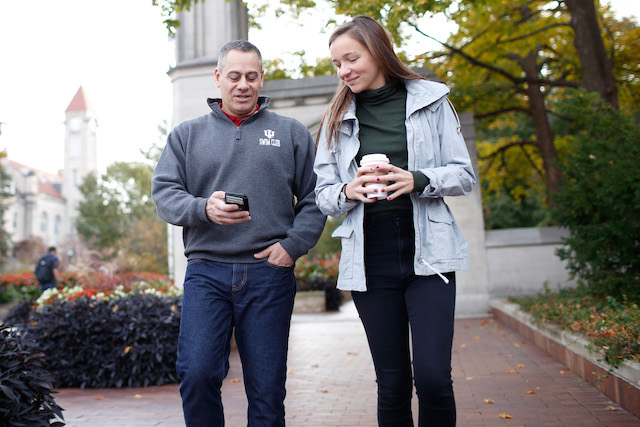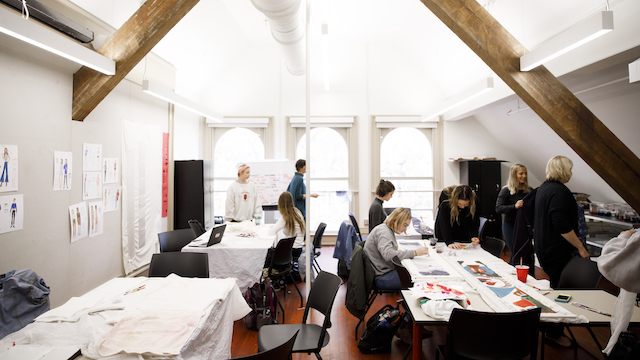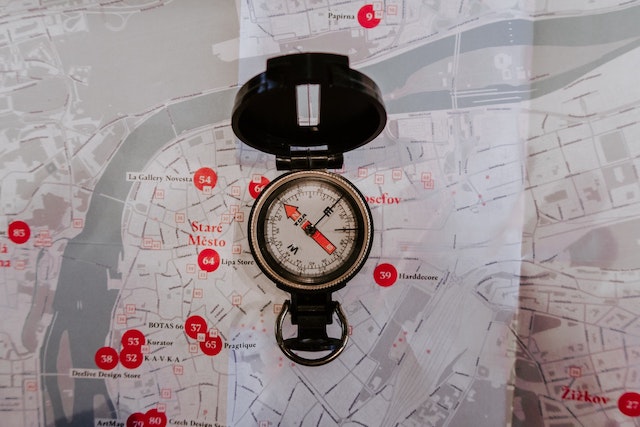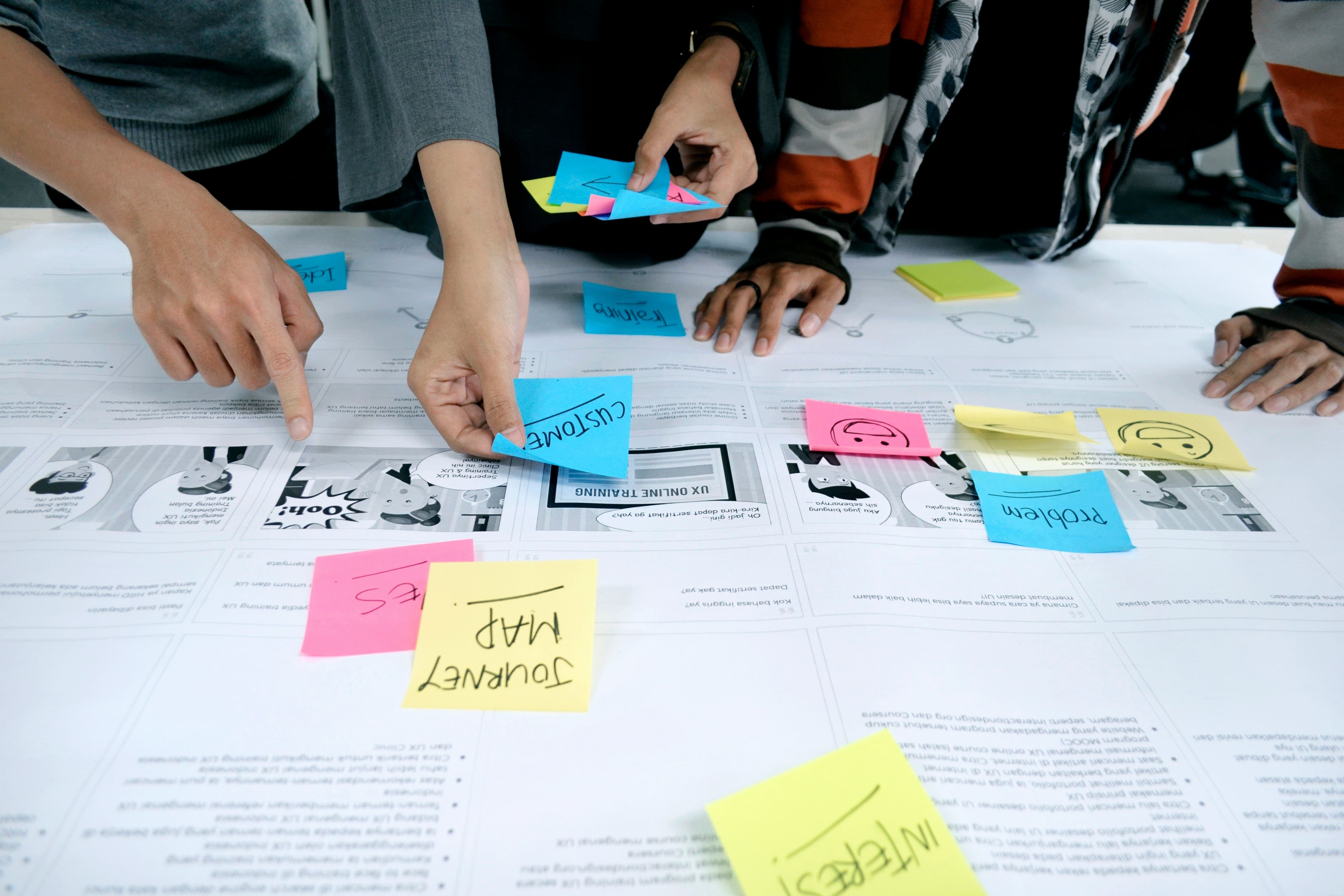Navigate back to Articles page

Read first:
Making impact maps is a skill that requires practice. Ideally, the goal for a project is known upfront, so the impact map is developed in order: goal, then actors, then impacts, then deliverables, then experiments.
However, sometimes the goal is initially unclear. Stakeholders may have an easier time describing a solution that could solve their problem than describing the problem itself.
The following two exercises will help form an impact map, regardless of the project’s starting point:
Exercise: Make an impact map
Properly formulating a goal can hinder the work of just diving in and developing an impact map. For this exercise, select a goal from the following list, then make an impact map from that goal.
Step 1: Select a goal
Select a goal from a predefined list.
If conducting this exercise with a group, consider using dot voting to select the goal. In the following examples, a + indicates one vote, and a highlighted item indicates the group’s selection based on the votes.
- Run a 5km road race in the next three months.
++++ - Help my family eat more nutritious food this year.
+++ - Limit my shower usage to under seven minutes a day for two weeks.
+ - Make two new soups this month.
+++ - Visit a national park this year with my family.
+++++ - Volunteer one day a month at a non-profit, for the next six months.
+ - Grow and harvest a tomato plant this season.
++++ - Read a book a month this year.
+++ - Play a round of disc golf at each course in town this year.
- Learn to identify six native bird species this year.
+++ - Start a sharing library (of things) in my neighborhood this year.
+++ - Increase attendance and participation at the local library by 5% over the next six months.
++
Step 2: Select actors
Each participant should spend 5 minutes making a list of actors (individuals, groups, or systems). Ask:
Who can help or hinder achieving the goal?
Come together as a group and share the lists. Use dot voting to select one to three actors for the next step.
- National Park Service
+ - Park visitors
- Park guide
- My family
++++ - Transportation
- Myself
+++++ - Weather
Step 3: Select impacts
Each participant should spend 5 minutes making a list of impacts (behavior changes) for each of the selected actors in Step 2. Ask:
What should the actors do or not do to impact the goal?
Come together as a group and share the lists. Use dot voting to select one to three impacts for the next step.
My family:
- Be motivated and excited.
+++++ - Identify a time period.
++ - Select a national park.
+
Myself:
- Fund the trip.
++ - Book transportation.
- Book lodging.
- Explore activities.
+++
Step 4: Select deliverables
Each participant should spend 5 minutes making a list of deliverables (solutions) for each of the selected impacts in Step 3. Ask:
How will you help the actors make the intended impact?
Come together as a group and share the lists. Use dot voting to select one to three deliverables for the next step.
Be motivated and excited:
- Watch relevant National Geographic documentaries.
+ - Borrow relevant books from the library.
++++++ - Take day-trips to local parks.
++ - Obtain and try hiking equipment.
Fund the trip:
- Estimate expenses.
+ - Get ad revenue from video blog.
++ - Put aside money.
- Reduce expenses.
Explore activities:
- Research hiking trails.
- Research major towns.
- Research “rainy day” activities.
+++
Step 5: Select experiments
Each participant should spend 5 minutes making a list of experiments (research or evidence) for each of the selected deliverables in Step 4. Ask:
How can you test whether the deliverable will have the intended impact?
Come together as a group and share the lists. Use dot voting to select one to three experiments for the next step.
Borrow relevant books from the library:
- Ask everyone about what they learned from the books; what more they want to learn before the trip; and what they want to see or do during the trip.
Research “rainy day” activities:
- Take the family to the children’s museum during a rainy day to gauge interest.
- Take the family to the outdoor zoo during a rainy day to gauge tolerance.
Step 6: Compose the impact map
As a group, take the lists in Steps 2 through 5 and compose them as an impact map. This can be in the form of an outline. Order every actor, impact, deliverable, and experiment by how important they are to achieve the goal.
Feel free to later expand, refine, and tweak the impact map as desired. To keep track of the work, append the current status to each deliverable (due date or done date) or experiment (success or failure).
- Goal: Visit a national park this year with my family.
- Actor: My family
- Impact: Be motivated and excited.
- Deliverable: Borrow relevant books from the library. (Done Oct 25.)
- Experiment: Ask everyone about what they learned from the books; what more they want to learn before the trip; and what they want to see or do during the trip. (Success on Oct 25!)
- Deliverable: Borrow relevant books from the library. (Done Oct 25.)
- Impact: Be motivated and excited.
- Actor: Myself
- Impact: Fund the trip.
- Impact: Explore activities.
- Deliverable: Research “rainy day” activities. (Due Dec 17.)
- Experiment: Take the family to the outdoor zoo during a rainy day to gauge tolerance. (Failure on Oct 7.)
- Experiment: Take the family to the children’s museum during a rainy day to gauge interest. (Scheduled for Nov 18.)
- Deliverable: Research “rainy day” activities. (Due Dec 17.)
- Actor: My family
Exercise: Discover the goal
Sometimes the goal is unclear or not well defined at the start of the project. In a roundabout way, the goal can be revealed by starting with a potential deliverable. Once the goal is clear, an impact map can be started which can reveal any number of additional deliverables that support the goal.
Step 1: Select a deliverable
Select a deliverable from a predefined list.
- Reusable straw
- Book about crafting fairy houses for your landscape
++ - Community garden
+++++++ - Solar powered wristwatch
- Inflatable paddle board
+ - Electric wood chipper
+ - Billboard ad
- Airless vehicle tire
++ - Self cleaning cat litter box
+++ - Wheelchair-friendly picnic table
+ - Historical film about the people of the Polynesian islands
++ - Self-healing concrete
+++
Step 2: Ask why
Take 10 minutes to ask “why” the selected deliverable is worth the investment. Ask it several times to find the underlying motivation.
- Provide produce for those less fortunate
- Fight hunger
- Lack of access to quality, affordable, and fresh food
- Fresh is healthier and tastier than canned or frozen foods
- Seeds cost less than store produce
- Build community and pride in the local community
- Expand and strengthen individual connections to community
- Connect community to local government
- Support other community goals with proceeds
- Builds resilience and self-sufficiency
- Improves the economic prospects
- Repurposes unused land
- Healthy activity
- Good food
- Physical labor
- Safe environment
- Open to everyone
- Family friendly
- Education
- Learn about nutrition and health concepts
- Learn about nature and growing
- Learn lifelong skill
- Increase opportunity
Step 3: Identify themes
Take 5 minutes to review the “why” responses in Step 2 and identify themes.
- Food access
- Nutrition
- Education
- Community
Step 4: Explore SMART criteria
Based on the responses in Steps 2 and 3, take 10 minutes to explore different aspects of the SMART criteria: specific, measurable, achievable, relevant, and time-based.
- Specific
- Families in poverty
- Located downtown
- Meal
- Measurable
- Number of people or families who will receive food
- Number of food varieties
- Amount harvested
- Reduce travel time for those receiving donations
- Number of meals made by fresh food
- Achievable
- Interest from local sponsors and volunteers
- City has undeveloped parcels
- Seeds are affordable
- Relevant
- Lack of nutritious food access
- Local groceries have below average food variety
- Time-based
- Growing season
Step 5: Make a goal
Transform the SMART criteria explored in Step 4 as a goal.
Provide all families below the poverty line in the local downtown area with one free and nutritious meal per week during this next year’s growing season.
Step 5: Make an impact map
Now, come full circle and make an impact map based on the goal in Step 5. If still relevant, the selected deliverable in Step 1 could be included as a deliverable in this new impact map.
Conclusion
With some structure and prompts, individuals or teams can explore a world of possibilities. With the make an impact map exercise, a goal can lead to an abundance of solutions. With the discover the goal exercise, a vague solution can lead to defining the goal and uncovering even better options.










